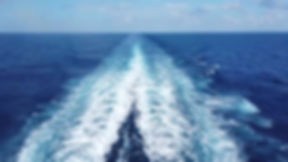
Controversies, in 2000, around the disappearance of La Minerve after the Kursk drama in Russia
Lack of official information after search operations
Since 1968, the position of SIRPA, the armed forces information service, has always been the same.The wreck of the Minerve not having been found, nothing can be communicated about it.This position appears paradoxical, even contradictory, with the existence of a"confidential defense" filewhich one then wonders what it could contain that deserved the secret.
The only "official" publication relating to the Minerva was an article published in the Revue Maritime of April 1968, even before the commission of inquiry had issued its report. It was written by CA Sacaze, former member of the commission of inquiry into the disappearance of the Sybille in 1952.
However, this article, however validated by the Ministry of Defense, as we discovered in 2018 when the Minerve archives were opened, was not followed by any other and was not even presented as an official version.
Large extracts of this article can be found on this site (clickHERE).
This silence on the conclusions of the commission of inquiry will open the way to a controversy from 2000 during the tragedy of Kursk.

A site dedicated to the Minerva on the Internet
Before this Russian drama around 1998, the site of Jean-Alain Autret,the tragedy of Minerva, had begun to pull the Minerva and the Eurydice out of the semi-oblivion that slowly covered them.
Jean-Alain's father, René Autret had been marin on the Minerve when it was launched and, even if he had not lost any_cc781905-5cde- 3194-bb3b-136bad5cf58d_comrade, was bruised by this tragedy.
Repeated attacks by Turkish hackers will eventually lead Jean-Alain Autret to freeze his site and cease all animation.
The Kursk tragedy and the Minerva controversy
In August 2000 the Russians lost their submarine Koursk in particularly dramatic conditions(details onWikipedia).
The 26/08/2000an article in Le Monde, by journalist Jacques Isnard, opens a controversy around the disappearance of the Minerve and Euridyce submarines.
(Read the article HERE)
The army would have deliberately concealed the causes of the accidents of the Minerve and the Eurydice deliberately to protect the commercial interests of the DAPHNE submarines which had known a certain success in the 'export.
This article causes an uproar among submariners. VAE Hubert Foillard responds in an article published in "La Baille"(?), but whose audience is limited. (Read the article HERE)
In the process, "La Croix" explicitly echoes this article to take up its arguments. (Read the article HERE)
Passage of Jean-Alain Autret on the TF1 newspaper on the occasion of the Kursk tragedy in August 2000
On October 23, in turn, Liberation, without mentioning the other two newspapers, published an article in the same vein, "fatal immersion" which is based, on the one hand, on the description of the drama made in the sitethe tragedy of Minerva (from the "Revue Maritime de 1968" quoted above), on the other hand takes up Le Monde's position on the Minerve accident. (Read the article HERE)
Curiosity then began to grow around ce "confidential defense" file, the existence of which few people knew or suspected outside the army.
Thus, since 2000 the controversy has continued to swell, it is taken up and relaunched by most of the media each time the drama of La Minerve is mentioned.
Several visits to the Vincennes archives by family members of the disappeared then came up against an end of inadmissibility. (seetestimonials)
Some will manage, individually, to have access to it thanks to the understanding of those in charge of the archives. But this remains the exception.
The resentment of the families has continued to mount since, the official position around Secret Defense proving less and less understandable.
End of the controversy over the concealment of technical problems from foreign navies
When we finally open the Minerve archives in 2018, however, we find inside one of the documents an annotation by Pierre Messmer himself which shows that there was no intention of concealment vis-à-vis with regard to foreign navies:
_edited.jpg)

We read underlined and initialed by the very hand of Pierre Messmer the Minister of Defence:
"Foreign Marines having or expecting DAPHNE-type desk pads should be informed of the conclusions of the Commission of Inquiry. I have prepared for them extracts from the commission's report, to which the main technical notes cited would be attached. in the hardware appendix."
The fact remains that besides this, the slightest information has never been communicated outside the Navy, either to families or to the general public.
